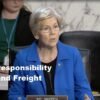Fiscal neutrality is a fiscal policy concept that refers to the idea that government policy should not influence or change the allocation of resources or economic choices of individuals and companies. This principle emerged as a reaction to the view that government policies often narrow the scope of economic activity and reduce market efficiency. Broadly speaking, fiscal neutral is defined as a situation where the tax system does not create incentives or disincentives for consumers or producers to change their economic behavior. The main objective of a neutral fiscal policy is to create an economic environment conducive to growth and stability, where the government does not interfere in the process of resource allocation through tax instruments. The general principles involve maintaining tax levels that are minimal, but sufficient to meet the funding needs of the public sector, as well as implementing a fair and simple tax structure that does not give preference to certain sectors or groups.
In practice, fiscal neutrality can be implemented in various ways, such as imposing a flat tax on individual and corporate income, maintaining a proportional tax rate structure, and reducing or eliminating various subsidies and fiscal incentives that lead to sector or group discrimination. certain. This is done to create a tax system that is fairer, more efficient and protects against market distortions. The impact of a neutral fiscal policy on the economy and market stability can actually vary depending on the conditions and level of implementation of each country. However, in general, fiscal neutrality can increase the efficiency of resource use, because the government no longer interferes in resource allocation. In addition, fiscal neutrality also tends to reduce the tax burden and reduce distortions caused by certain tax preferences, thereby increasing competitiveness and investment. Fiscal neutrality can also contribute to overall market and economic stability, because it is able to suppress economic fluctuations that arise due to changes in discretionary fiscal policy. However, it should be remembered that fiscal neutrality is not the only factor that influences economic growth and market stability, so it is necessary to pay attention to how effective this policy is in achieving long-term economic goals.
Causes and Factors Affecting Fiscal Neutrality
Several factors that influence fiscal neutrality include government policy and regulatory changes. Fiscal policies, such as government spending and taxation, influence the economy directly and external macro management. Changes in regulations, for example subsidies or tax incentives, can also create interventions in market mechanisms which then have implications for the level of social welfare. Macroeconomic conditions, such as inflation and interest rates, have a significant impact on fiscal neutrality. A high inflation rate can reduce the effectiveness of fiscal policy in controlling price stability in line with optimal economic growth. In addition, interest rates are a monetary policy instrument that has direct implications for fiscal policy. The high interest rate will affect government borrowing costs as well as private investment spending in maintaining economic growth.
The market response to fiscal intervention also affects fiscal neutrality. If future economic conditions are caused by unconducive economic policies, then market participants will take this risk into account in the decision-making process. As a result, consumption and investment levels will be affected, with reduced demand increasing supply in the market. In the long term, this will reduce output and national income levels. In conclusion, factors that influence fiscal neutrality include government policies and regulatory changes, macroeconomic conditions such as inflation and interest rates, as well as market responses to fiscal intervention. The government must make better efforts in formulating fiscal policies that are able to create a stable economic environment without disrupting existing market mechanisms. Awareness of these factors is very important for the government to increase effectiveness and efficiency in managing fiscal policy, as well as to minimize negative impacts that can hamper economic growth and social welfare. In this way, achieving neutral fiscal goals can create an economic climate that is conducive to the development of the public and private sectors.
Fiscal Neutrality Measuring Method
The fiscal neutrality measurement method is an important technique for assessing the effectiveness of fiscal policy in creating economic stability and equality. A qualitative approach is one of the methods commonly used in implementing this measurement. Surveys and policy analysis allow researchers and policy makers to explore information from various sources such as experts, government, and society, and understand their preferences in implementing neutral fiscal policies. This analysis also includes an assessment of social impacts and distribution of resources in society.
As an alternative to the qualitative approach, quantitative methods are also quite effective in measuring fiscal neutrality. The use of certain ratios or indices, such as the fiscal discretionary index and the tax-to-GDP ratio, can provide a more precise picture of the fiscal situation of a country or region. This method is often more objective because it is free from the personal biases and subjective views of survey respondents. In addition, quantitative methods allow easier comparison of data.
Comparisons between countries or regions are also a useful method for measuring the effectiveness of neutral fiscal policies. Through this comparison, we can assess the extent to which a policy is successful in creating a balance between government revenues and spending and promoting economic growth. This comparison also helps to evaluate whether the country or region is in line with international standards and best practices in fiscal management.
So, there are three main methods for measuring fiscal neutrality: qualitative, quantitative and comparison approaches between countries or regions. Each method has its own advantages and disadvantages, and can complement each other, so it is important to apply a combination of the three approaches in measuring the effectiveness of neutral fiscal policy. In this way, policy makers can formulate better strategies and take the right decisions in overcoming fiscal issues and achieving long-term economic goals. In carrying out these measurements, it is important to always adapt these methods according to the local context and specific needs of a country or region, so that the measurement results can be more accurate and relevant.
Case Examples and Application of Fiscal Neutrality
To understand the concept of fiscal neutrality more clearly, let’s review several case examples and the application of this principle in fiscal policy. As a first example, we can look at the income tax system. In a neutral income tax system, the tax rate is the same for all sources of income, whether it comes from salaries, dividends or rental income. This principle ensures that individuals or companies have no incentive to move their resources from one sector of the economy to another just for the sake of reducing the tax burden. Therefore, resource allocation in these sectors will be more efficient and create competitive and fair conditions for all economic actors.
The second example is the neutral imposition of value added tax (VAT). In a neutral VAT system, tax rates are applied to all products and services uniformly without creating distortions or preferences for certain products. In this case, VAT will not change consumer demand for products or services, so manufacturers do not need to change their business strategies just because of inconsistent tax rates. Apart from that, implementing VAT in a neutral manner will also reduce administrative complexity because the government does not need to determine different tax rates for each product or service.
However, it is important to remember that maintaining the principle of fiscal neutrality in practice may be difficult to achieve. Sometimes, governments adopt fiscal policies that are not completely neutral in order to achieve certain social or environmental goals. For example, governments often provide fiscal incentives for companies that invest in renewable energy in an effort to stimulate investment in this sector and reduce carbon emissions. In cases such as these, violations of neutral fiscal principles may be justified to achieve broader public goals. However, it is important for governments to consider the impact of violating these neutral fiscal principles on economic efficiency and ensure that the fiscal policies implemented are commensurate with the benefits generated.
Overall, fiscal neutrality plays an important role in creating an economic environment that is conducive to growth and investment. This principle encourages efficient allocation of resources and creates competitive and fair conditions for all economic players. Although in some situations this principle may be violated for social or environmental interests, the government must maintain a balance between neutral fiscal policy and other objectives so that economic growth is not hampered.












